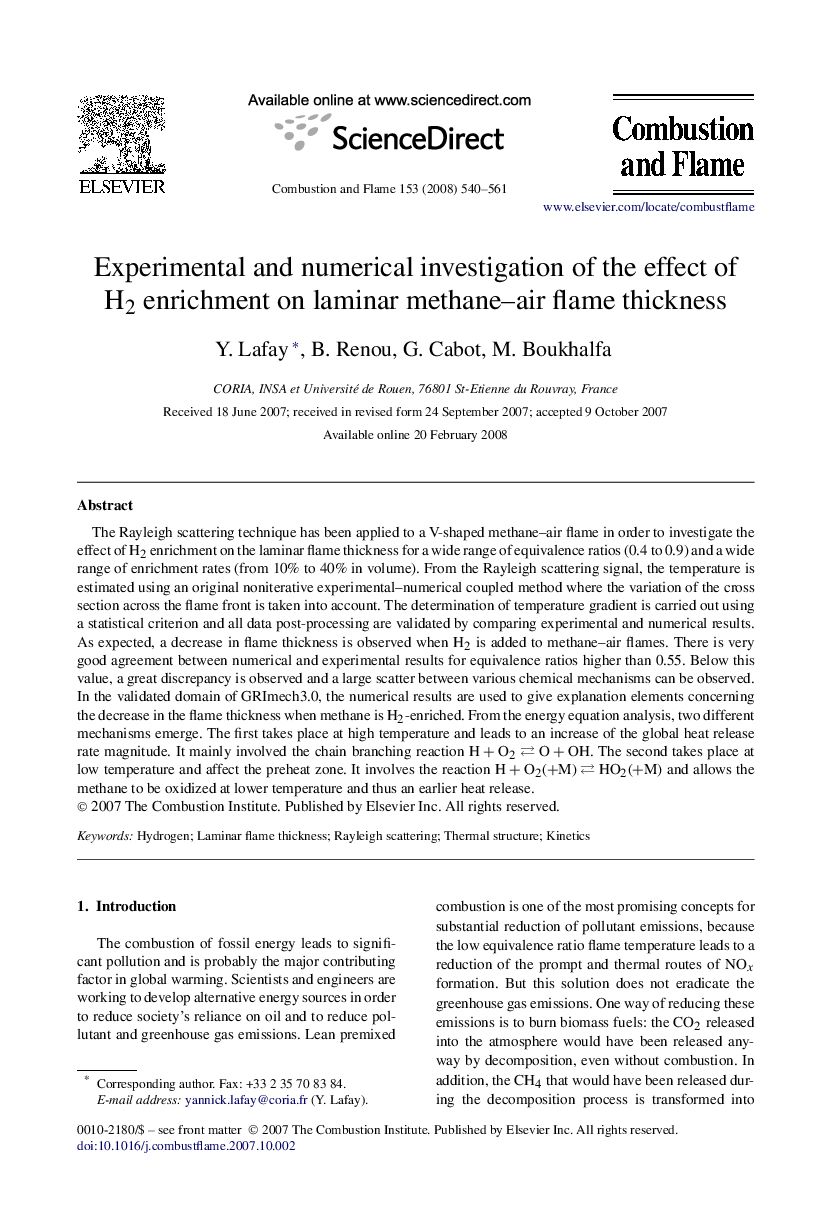| Article ID | Journal | Published Year | Pages | File Type |
|---|---|---|---|---|
| 167941 | Combustion and Flame | 2008 | 22 Pages |
The Rayleigh scattering technique has been applied to a V-shaped methane–air flame in order to investigate the effect of H2 enrichment on the laminar flame thickness for a wide range of equivalence ratios (0.4 to 0.9) and a wide range of enrichment rates (from 10% to 40% in volume). From the Rayleigh scattering signal, the temperature is estimated using an original noniterative experimental–numerical coupled method where the variation of the cross section across the flame front is taken into account. The determination of temperature gradient is carried out using a statistical criterion and all data post-processing are validated by comparing experimental and numerical results. As expected, a decrease in flame thickness is observed when H2 is added to methane–air flames. There is very good agreement between numerical and experimental results for equivalence ratios higher than 0.55. Below this value, a great discrepancy is observed and a large scatter between various chemical mechanisms can be observed. In the validated domain of GRImech3.0, the numerical results are used to give explanation elements concerning the decrease in the flame thickness when methane is H2-enriched. From the energy equation analysis, two different mechanisms emerge. The first takes place at high temperature and leads to an increase of the global heat release rate magnitude. It mainly involved the chain branching reaction H + O2 ⇄ O + OH. The second takes place at low temperature and affect the preheat zone. It involves the reaction H + O2(+ M) ⇄ HO2(+ M) and allows the methane to be oxidized at lower temperature and thus an earlier heat release.
